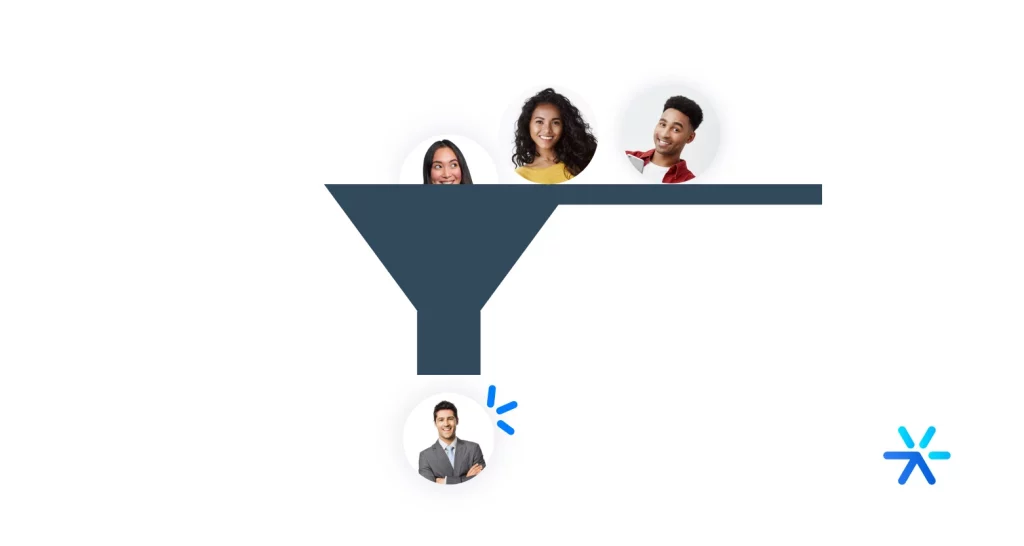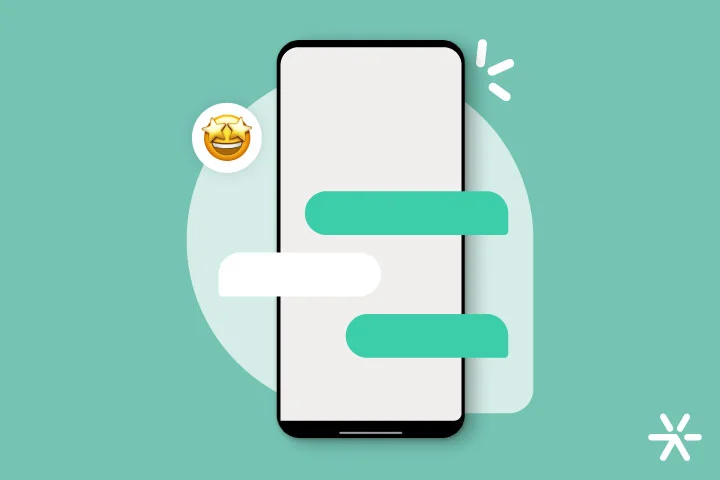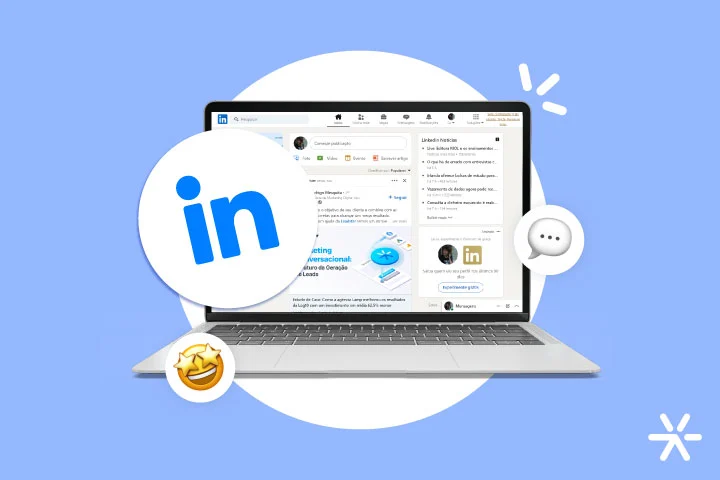Conversion Marketing: What it Is and 29 Practical Tips
Conversion marketing is a broad term that encompasses many aspects and methodologies of digital marketing simultaneously.
Whether you’re working with inbound marketing, paid media, or performance marketing, conversion marketing principles are always at play.
This is because conversion itself is now the primary objective of most digital marketing efforts. It guides potential customers along their consumer journey and through the sales funnel.
Today, we’ll delve into this holistic characteristic of conversion marketing. We’ll also explore its almost synonymous counterpart, CRO, and conclude with some practical formulas and tips.
Ready to dive in? Let’s begin:
What is Conversion Marketing?

Conversion marketing, as the name suggests, comprises actions within a digital marketing strategy aimed at increasing your conversion rate.
That’s why I say conversion marketing is everywhere. Conversion itself is fundamental in virtually all digital marketing methodologies.
The conversion marketing process, therefore, is quite diverse. Various tools and sources of information are considered in its application. Some of these include:
- Campaign analysis through Analytics;
- Customer feedback;
- User experience analysis on the website;
- Purchase process analysis;
- Implementation of conversion tools (such as landing pages and chatbots);
- And other specific actions according to what you’re building and offering.
The main point of conversion marketing methodology is to create the website and marketing strategy with a focus on opportunities to generate qualified leads and increasingly more sales.
Conversion marketing is a broad strategy, but these analyses, when applied in digital marketing, are referred to as CRO – Conversion Rate Optimization.
But before we delve into CRO, we also need to discuss a more basic point: what exactly is a conversion?
What Exactly is a Conversion?
In digital marketing, a conversion is the term given to every action taken by the user on a website, especially those that propel them further along the marketing and sales funnel.
Conversions can be divided into two types:
- Macroconversions: These are conversions related to the main objective of your website;
- Microconversions: These are smaller conversions that still propel the user through the funnel.
A little later in this topic, we’ll bring a practical example, but here’s a quick spoiler.
Suppose a user enters your site and clicks on a banner to receive a newsletter. They’re performing a microconversion because your website’s goal isn’t to bring in more newsletter sign-ups, right?
Now, suppose another user enters your site and requests a quote via the WhatsApp button or a contact form.
In this case, they’ve made a macroconversion because your website’s main goal is to sell.
Simple, isn’t it? Now we’re ready to talk about CRO.
What is CRO?
Conversion marketing and CRO are nearly synonymous. Conversion marketing is the overarching methodology: it’s through conversion marketing that you increase conversions on your site and in your campaigns as a whole.
CRO is the primary methodological tool of conversion marketing. It’s through CRO that you can analyze specific elements individually to understand their performance in conversions and improve them.
Let’s consider a different example to better understand the similarities and differences between the two. Content marketing and SEO, for example, are extremely similar.
The difference is that content marketing can be applied on various platforms, whereas SEO, being search engine optimization, specifically targets search engines — primarily Google and YouTube.
One doesn’t work without the other, and they can be quite different or absolutely the same thing. In the case of blogs, for instance, content marketing and SEO describe content creation and its optimization, all at once.
The primary metric of CRO is the conversion rate, which we’ll discuss shortly after this practical example. Stay tuned.
Practical Example
Just as we understand that conversions can be micro or macro, we can apply the same understanding to conversion marketing and CRO.
Let’s take the example of Texas Textile as our company. It’s not a real company, ok?
Applying conversion marketing, Texas created a website with several conversion possibilities: a blog to increase organic traffic, banners and links in rich materials blogs, chatbots along commercial pages inviting the user to take a test, and so forth.
Texas used conversion marketing to bring more people to its website and turn them into leads.
Now, to measure the effectiveness of these actions and improve the conversion rate, Texas will need to apply CRO.
Using Google Analytics, Texas’s marketing managers noticed a high volume on the contact page but a low conversion rate. By removing the form and installing a chatbot, Texas began generating three times more leads.
In their blog posts, the same story: through link parameterization, the marketing team noticed that clicks on banners were very low. As a CRO measure, a new copywriter was hired, and the conversion rate increased.
See the difference between CRO and conversion marketing? One is the tool, and the other is the entire workshop.
What is Conversion Rate and How to Calculate it?
The Conversion Rate is the primary metric of conversion marketing and CRO.
It is through it that we can determine whether our efforts to increase conversions, at any stage of the funnel, are on the expected track.
The Conversion Rate is the ratio between users who converted and those who did not convert (all visitors to the page) in a campaign, form, Chatbot, etc.
Each marketing action, within or outside your site, will have a specific and individual Conversion Rate. But general conversion rates can also be calculated.
For example: Texas Textiles launched a campaign on Google Ads aimed at generating new customers through a flash promotion. This specific campaign will also have a specific Conversion Rate.
But Texas also has other bottom-of-the-funnel ads running on Google Ads, unrelated to the flash promotion. Together, they also have a general Conversion Rate, which helps understand the channel’s performance as a whole.
Now let’s move on to Tetê’s own website. The contact form has a conversion rate, the banner for a Lead Magnet has another, the Chatbot has another, and even the flows within the Chatbot have different conversion rates among themselves.
But at the same time, the entire site also has a general Conversion Rate related to its main objective. What is the Conversion Rate in sales for the entire site?
All of this is to say that the Conversion Rate depends on what is being analyzed. Everything that generates conversions has a specific rate, and in some cases, it can also have a general one.
How to Calculate the Conversion Rate?
The conversion rate, as we discussed, has a very specific formula: the ratio between people who converted and people who did not convert — that is, the visitors to your site.
Everything changes from campaign to campaign, except for this calculation. To make it more visual, see the example and the explained formula.
Suppose Texas Textiles launched a landing page to promote an e-book. This landing page had 800 visitors and 120 conversions. Let’s see the calculation?
Conversion Rate = Conversions / Visitors
Converstion Rate = 120 / 800
Conversion Rate = 15%
The calculation is as simple as that! The difficult part, in many cases, is averaging the conversion rate of a group of campaigns, for example, or the entire site.
In these cases, the calculation should be done using simple averages — the sum of the rates divided by the number of variables. The tedious part, in many cases, is understanding what these variables are.
Step-by-Step Guide to Start Doing Conversion Marketing

All right: you understand what conversion marketing is, what the difference is between it and CRO, and what their similarities are.
You also know what the Conversion Rate is and how it works both individually and en masse, right?
Then you are already on track to start doing conversion marketing today.
Conversion marketing, as a methodology, can be applied whenever you want. Its tools are democratic — many of them are free, by the way — and there’s no hidden knowledge that only those who have studied a lot know.
Anyone with a website, a product, and an offer at hand can start doing conversion marketing immediately. And now I’m going to show you how. Check it out:
Understanding Analytical Tools
Before you start, you need to know the main tools of conversion marketing: Analytics.
Each advertising or content publishing platform comes with an Analytics system where you can track the development of your efforts in real-time.
For example: everything indexed on Google comes with Google Analytics. Therefore, your site’s performance can be analyzed through it. Google Ads campaigns too.
Another example: all the ads you run on social media also come with their own Analytics. In the case of Instagram and Facebook, Meta Ads controls it.
Let’s talk a little more about each of these Analytics now. Keep up:
Google Analytics
Google Analytics is the tool for tracking campaign results on Google Ads and general information about the traffic and conversions that happen within your site.
Through it, you can understand how many people entered your site, where they went, and what actions they took on it.
For paid media, Google Analytics shows campaign results — how many clicks they had, how many people they were shown to, what the average price of each conversion is — the basis for ROAS calculation — etc.
Google Analytics is one of those tools you need to know to understand. It’s free and simple to implement.
Social Ads Analytics
Every social network that works with ads has its own Analytics.
In fact, this is even a bit reductionist: it’s possible to track statistics of your profiles even without running any ads, although the information about conversions, in this case, is quite limited.
TikTok Ads, Meta Ads, YouTube Ads, LinkedIn Ads: all offer the possibility to track your conversions on the same platform where you create your ads.
Marketplace Analytics
Those who work with e-commerce also sell on marketplaces like Amazon.
All these services also offer dedicated Analytics for you to work on your conversion marketing.
In these cases, Analytics depends a lot on the platform itself. In most cases, all offer some information even for those who don’t run ads on these marketplaces, but the best features are really for those who work with them.
Inbound Platforms
By far, the simplest way to get information about top and middle funnel conversions within the Inbound Marketing strategy is through dedicated marketing platforms.
We’re talking about platforms like RD Station, ActiveCampaign, etc. The Analytics systems of these platforms, however, are very related to Google Analytics and the campaigns you create within them.
The information extracted from Google Analytics is mainly related to your site’s traffic — what is the organic and paid percentage? What are the main sources of traffic? What is the demographic of the users?
The “bulk” of these platforms, however, is in the analysis of campaign conversions made through them.
Analyzing conversions of specific landing pages, for example. If they were created through these platforms, it’s not necessary to check their performance in Google Analytics: the platforms themselves show you.
For email marketing campaigns, however, the available information is only what the platform shows you.
Creating Your First Tests
Ok, now you’re familiar with conversion marketing analysis platforms. What’s the next step?
Create A/B tests to analyze the variation of each campaign or action.
A/B tests are widely used in specific campaigns, especially in ad campaigns.
The concept is simple: instead of creating a campaign, putting it online, and praying for everything to go well, you create two different campaigns with the same objective and see which one performs better.
This can be done at mainly two different times: when creating the campaign and after realizing that improvements need to be made.
It works like this: when creating the campaign, you create two with different elements. These elements don’t need to be very different: perhaps a distinct image, a copy with variations, a CTA button in another place or with another color, etc.
Then you analyze which one had more results within a short period of time, two or three days. But this depends on your strategy.
The second modality is practically applied CRO. You take a campaign that is not performing well, try to understand the reason, and create another campaign, which although different, is still quite similar and has the same offer.
Analyzing the Results and Making Adjustments
Look: A/B tests are extremely important in conversion marketing, mainly because they bring continuous improvement to your campaigns. Through them, you learn not only what works but also what doesn’t.
The idea of the topic above is that you no longer run campaigns without some kind of A/B test. You can even create them in emails, by the way.
So, with the A/B tests created, it’s time to analyze the performance of each one.
Take into consideration primarily the conversion rate, using the formula I showed earlier. And also consider other past campaigns.
Imagine: you conducted an A/B test with different images in your ad. One version brought a conversion rate of 10%, the other 15%.
But past campaigns brought minimum conversion rates of 20%. In this case, the A/B test was successful, but the entire campaign fell below the overall conversion rate.
This is the kind of macro analysis you need to do. It’s holistic and rarely has an exact result. The only certainty you can have with conversion marketing is continuous improvement.
Applying CRO to Specific Pages on Your Site
We’ve reached the second part of the text 🤓 Now, we need to discuss some practical points.
Starting with one of the most crucial: how to apply CRO and conversion marketing to your site?
To organize the subject well, first, let’s talk about how to conduct the analysis: what tools help and where you need to look.
Then, let’s delve into the processes and the professionals required to implement changes.
And to conclude the topic, how to measure the results of the change and compare them.
Shall we?
Assessing the Need
The first step to applying conversion marketing to your site today through CRO techniques and tools is to understand which pages are underperforming.
And the first step for that, in turn, is to understand what the expected results are.
For example: if your site doesn’t generate much traffic, the conversion rate might be high, but the number of conversions won’t be.
Therefore, the analysis of your site also needs to be quite holistic.
You can assess which pages need improvement by making simple comparisons to start.
What is your overall conversion rate? What is your conversion rate on rich materials? What is your top-of-the-funnel conversion rate? Which one do you want to focus on?
With these rates on paper, you can start investigating other points that impact conversion: do you have too many offers on your site? Do you have enough CTAs?
These simple comparisons are a great starting point. But if you want to go further, some tools can help you. I’ve compiled a list here with 3 fundamental apps, from basic to advanced:
- ScreamingFrog: for SEO specialists. It can generate super dense reports with all the SEO improvements your site needs to bring more traffic to your pages, which impacts the number of conversions. The software is free.
- MixPanel: creates simple analytics for your site, in case you have difficulty working with Google Analytics 4 Events;
- HotJar: creates heatmaps that show “the paths” of users on your sites. What are the regions where they stay the most? That alone helps you understand where to place the best conversion opportunities;
Implementing Changes
Implementing changes to your site based on conversion marketing and CRO is a point where the famous “it depends” comes into play.
Can you apply the changes alone, without in-depth programming knowledge? It depends on the type of change and your CMS system.
Changing a banner, for example, on a WordPress site takes a maximum of 10 minutes. Maybe 20, if the site’s construction is a bit confusing.
Now, making changes directly in the code — like changing a CSS style, for example, or altering a script — will require professionals with experience in front-end programming.
The important thing for marketing managers is to be able to analyze what needs to be changed using conversion marketing and CRO as the main arguments. Then, the change itself is best executed by an operational team.
Measuring the Results
Will you have the best conversion rate of all time after applying these conversion marketing optimizations? No, you won’t 😅
Or rather: conversion marketing will always be necessary. You will never reach the point where there is nothing left to improve. Conversion optimization opportunities will always arise from all sides.
This is because, as I mentioned a bit earlier, conversion marketing is a work of continuous improvement. You will always need to repeat the process of analyzing your site. And then start all over again.
Tips for CRO at Each Stage of the Marketing and Sales Funnel

This final part of the article will be the most practical one so far.
We’ve talked a lot about conversion marketing and CRO-based analysis, but how do you apply concrete actions at each stage of the funnel?
It’s important to emphasize that these actions will vary greatly from company to company and from strategy to strategy.
The important thing here in this topic isn’t so much for you to jot down each of the actions I’m going to suggest, but to use them as a general framework to create your own.
Here, we’ll discuss Top of the Funnel, Middle of the Funnel, and Bottom of the Funnel. To learn more about what each of these stages represents in a digital marketing strategy, access the explanatory links at the beginning of each paragraph, okay?
So let’s get started:
Top of the Funnel
The Top of the Funnel represents users who are encountering your brand for the first time.
In the case of e-commerce, your users may be researching a product in various places simultaneously, and you need to stand out.
On sites where sales don’t happen, the Top of the Funnel represents the first conversion stage: from visitors to leads.
Here are the main recommendations for this stage:
- Write good product descriptions;
- Highlight your “buy” button;
- Seek reviews of your products;
- Include user-generated content on your pages;
- Improve the copy of your ads;
- Create more Lead Magnets;
- Conduct keyword research;
- Work on link building;
- Improve your site’s speed;
- Research your competition and create better content;
- Include more images and even videos;
- Reduce form friction through Chatbots;
- In your blogs, always answer the main questions of the topics immediately.
Middle of the Funnel
The Middle of the Funnel deals, on sites where there are no direct sales, not with a visitor anymore, but with a lead.
Your effort now is to increase the conversion of these leads to the next stage of the funnel, the bottom.
In e-commerce, the Middle of the Funnel also deals with people who have already shown interest in your product or who are already aware of a problem that your product can solve.
The main actions for this stage are:
- Creation of email nurturing flows;
- Personalized campaigns showing key products to a target audience;
- Creation of highly detailed product reviews;
- Creation of personalized content about the service offered;
- Creation of more direct CTAs in this type of content;
- In-depth content in more technical e-books;
- Engineering-as-marketing.
Among other specific strategies. Unfortunately, the Middle of the Funnel is one of the most forgotten stages by beginner marketing professionals.
But much of the CRO work, although not done here, is the result of your efforts in this stage.
Without the Middle, the Top goes on forever, and the Bottom never arrives.
Bottom of the Funnel
The Bottom of the Funnel is the moment when the user of your site or your lead is ready to make a purchase.
If you worked on the Middle of the Funnel with lead nurturing, this stage is related to your MQLs — marketing-qualified leads.
But look: opportunities at the Bottom of the Funnel can come from anywhere, including from people who have never seen your brand before. If your site follows the recommendations below, you have more chances to convert these people too.
In e-commerce, the story is the same. People may be looking for a specific product and find it on your site — that’s the classic definition of the Bottom of the Funnel in this modality.
But other people may also have gone through nurturing flows and lead scoring — a classic example here is cart abandonment.
Here are some important tips to optimize your conversions at the Bottom of the Funnel:
- Offer Chatbots or Live Chat on sales pages;
- Offer full access to your site without the need to register;
- Offer, even, the possibility of buying without registration;
- Offer automation options in your checkout, like Google Pay for example;
- Put your security certifications on key sales pages;
- Highlight additional fees;
- In Bottom of the Funnel content, always include CTAs like “Talk to an Expert”;
- Use Custom Flows for Bottom of the Funnel in your Chatbot;
- Transition from reading to conversation with a simple sales pitch.
Drive More Conversions via Chatbot with Artificial Intelligence
One of the main points of conversion marketing is understanding what your pages offer to users and, through that, understanding which phase of the buying journey these users are in.
From there, you can create CTAs with more impact and that offer exactly what your customer needs when they need it.
And there’s some hard work involved, you know? 😅
You need to list the main pages of your site, understand which offers are the best, create individual CTAs, and measure their results via Google Analytics, most of the time, which requires URL parameterization and event configuration in Google Analytics.
This takes a lot of time. But it doesn’t have to: with Leadster, you cut at least 50% of that effort through our Chatbot with Artificial Intelligence support.
Our feature that uses ChatGPT reads your main pages and suggests, in a personalized flow, 5 call-to-actions. All simple, automatic, and already optimized.
Besides, you don’t even have to believe me telling you how useful it is. Try Leadster for free today and see for yourself. I’ll be waiting for you. Best regards and see you in the next text!







